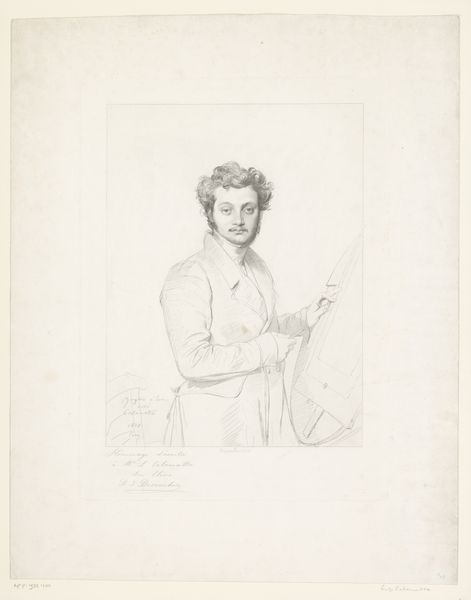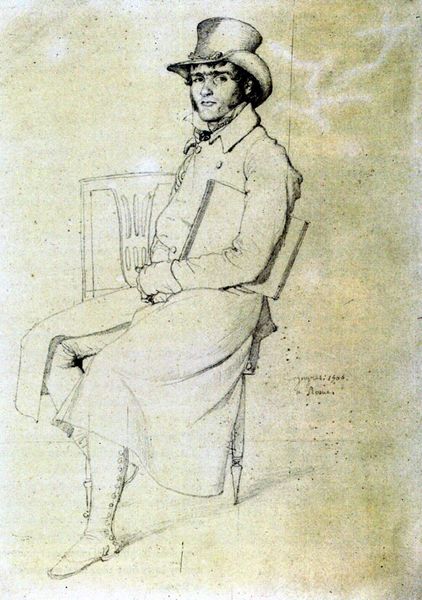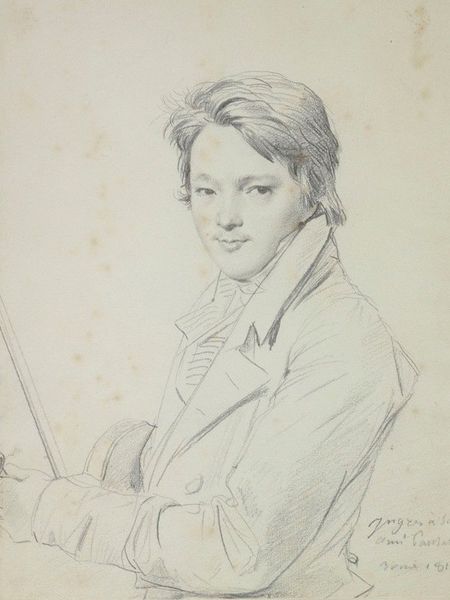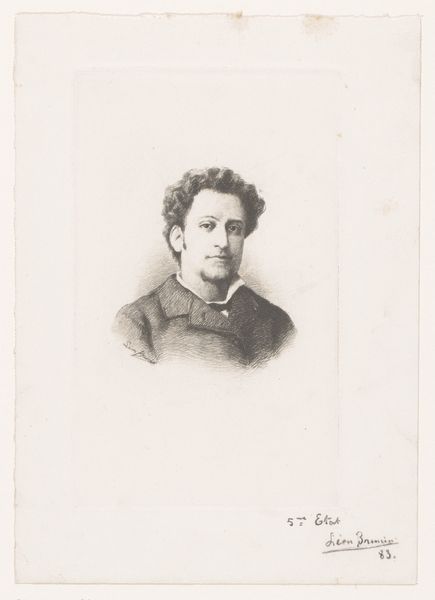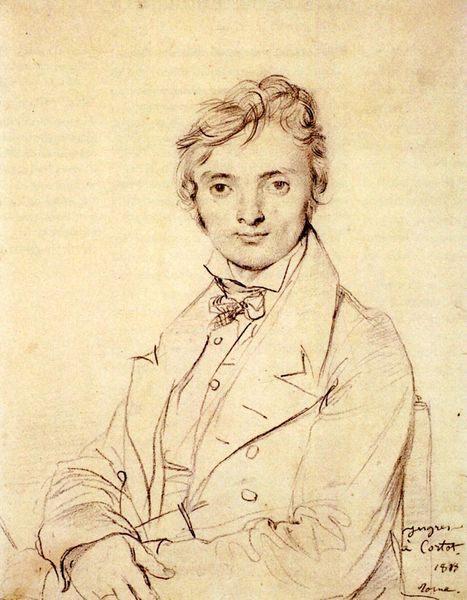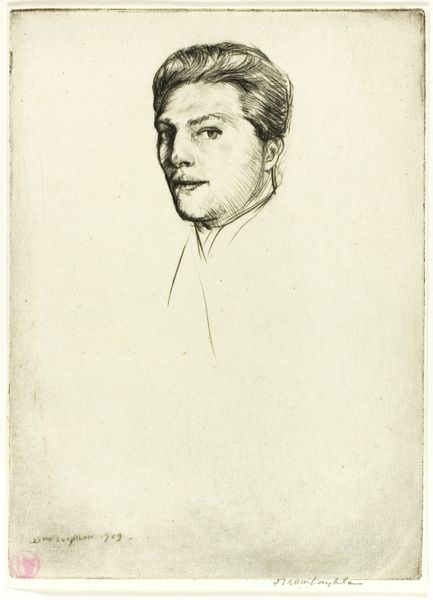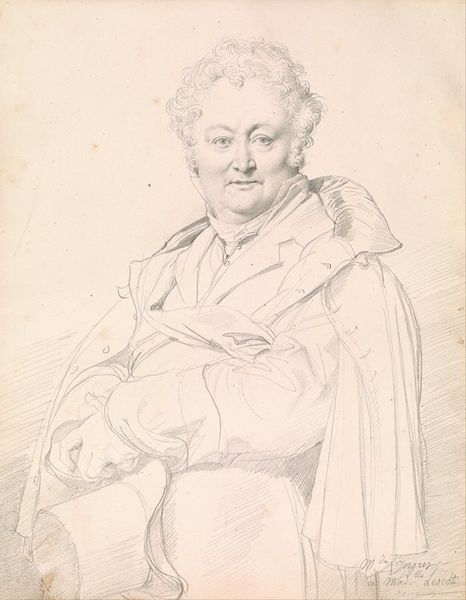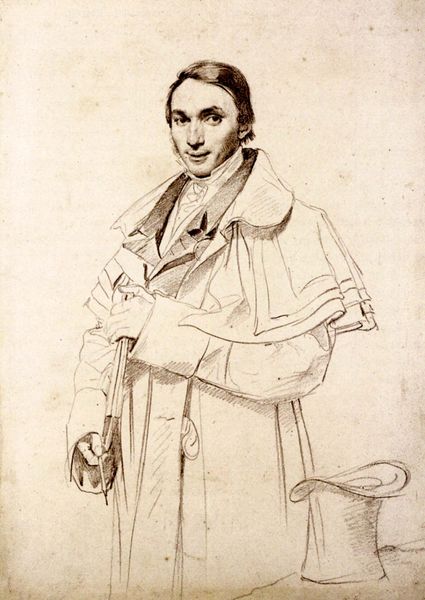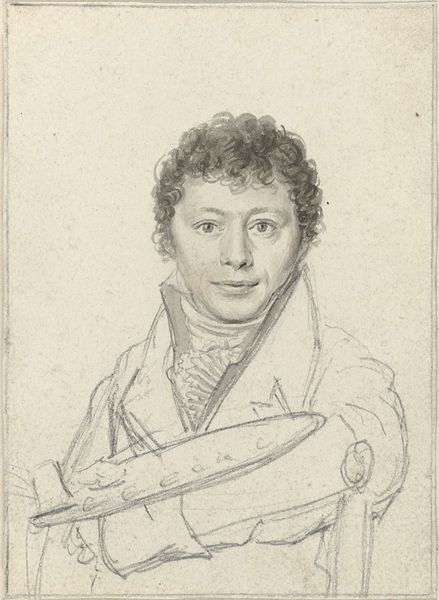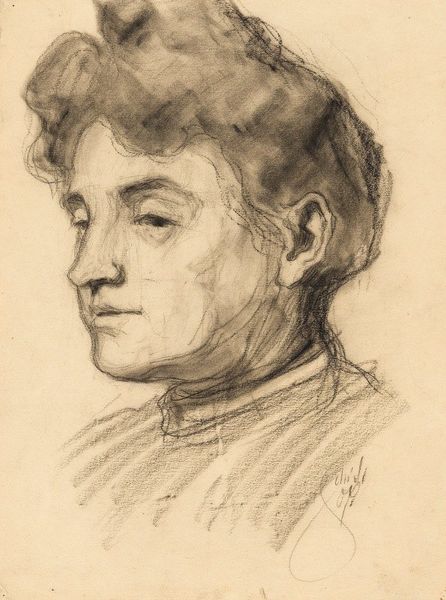
drawing, pencil
#
portrait
#
drawing
#
neoclacissism
#
pencil sketch
#
charcoal drawing
#
pencil drawing
#
sketch
#
pencil
#
portrait drawing
Copyright: Public domain
Editor: Here we have Ingres' pencil portrait of Luigi Calamatta. I'm struck by the sketch-like quality and how it highlights line over form. What do you see in this piece, focusing on the materials used and the broader context? Curator: The immediate thing I notice is Ingres' strategic use of pencil. Think about it: pencil, seemingly simple, made of graphite—mined, processed, distributed— becomes a tool for rendering the likeness of another artist. This isn't just about representation, it’s about the means of artistic production itself. How does the very availability of standardized materials, like the pencil, influence artistic practice? Editor: So, you’re suggesting the mass production of pencils, something we take for granted, played a role in democratizing portraiture or shifting artistic priorities? Curator: Exactly. Prior to such standardization, creating art was tied to resource availability and the artist's ability to produce even the basic tools. Here, Ingres wields a readily available tool, challenging the boundaries between 'high art' and the accessible craft of drawing. How might this have impacted the perception of artistry and labor during his time? Editor: That's fascinating. I hadn't considered the pencil itself as a key element. Now I’m thinking about how the very accessibility might affect the value society places on artistic skill. Curator: Precisely. And consider the paper. Its materiality, its sourcing, its processing. The labor behind even seemingly simple drawing has a significant socio-economic aspect. Editor: I never really considered those details when looking at art. Thanks! Curator: Looking at the work in these terms reveals new dimensions and tells us so much about its place in the world, both then and now.
Comments
No comments
Be the first to comment and join the conversation on the ultimate creative platform.
